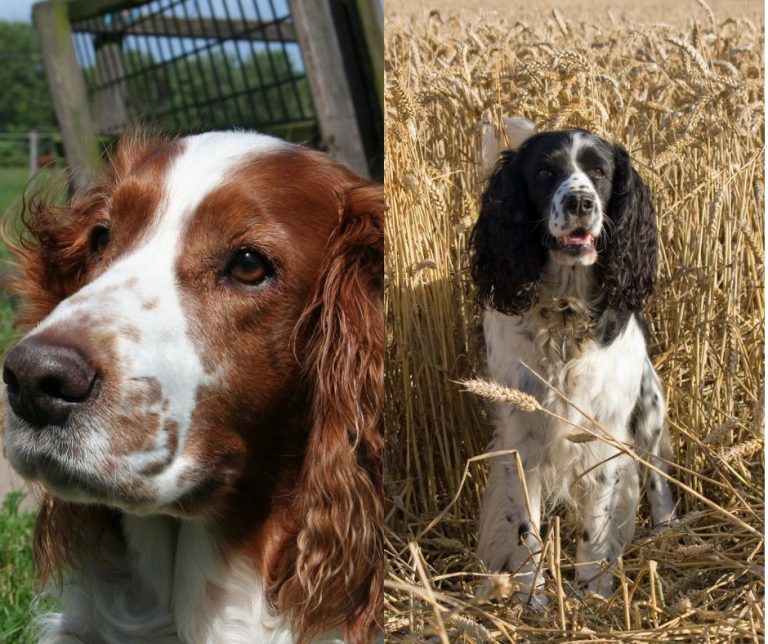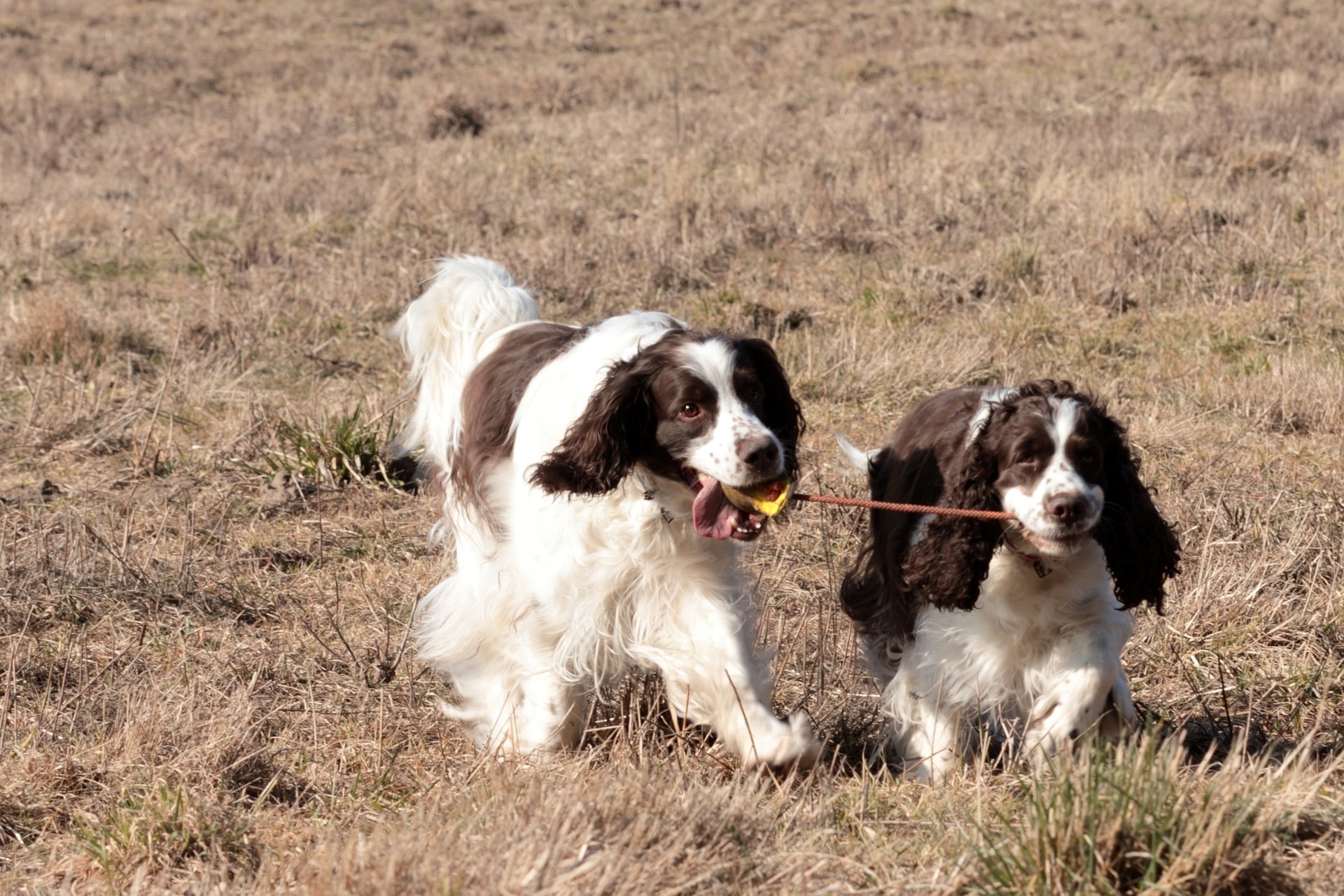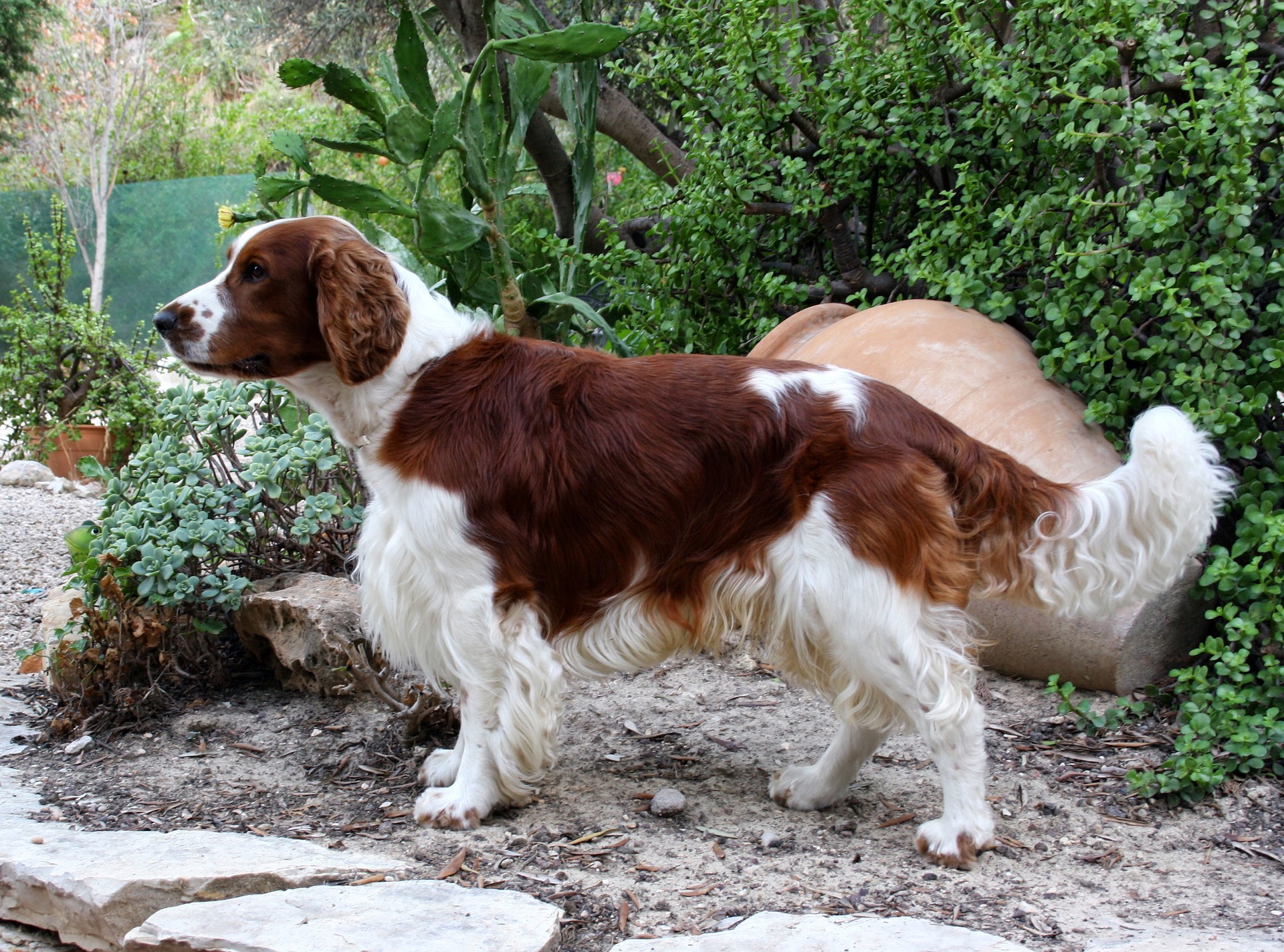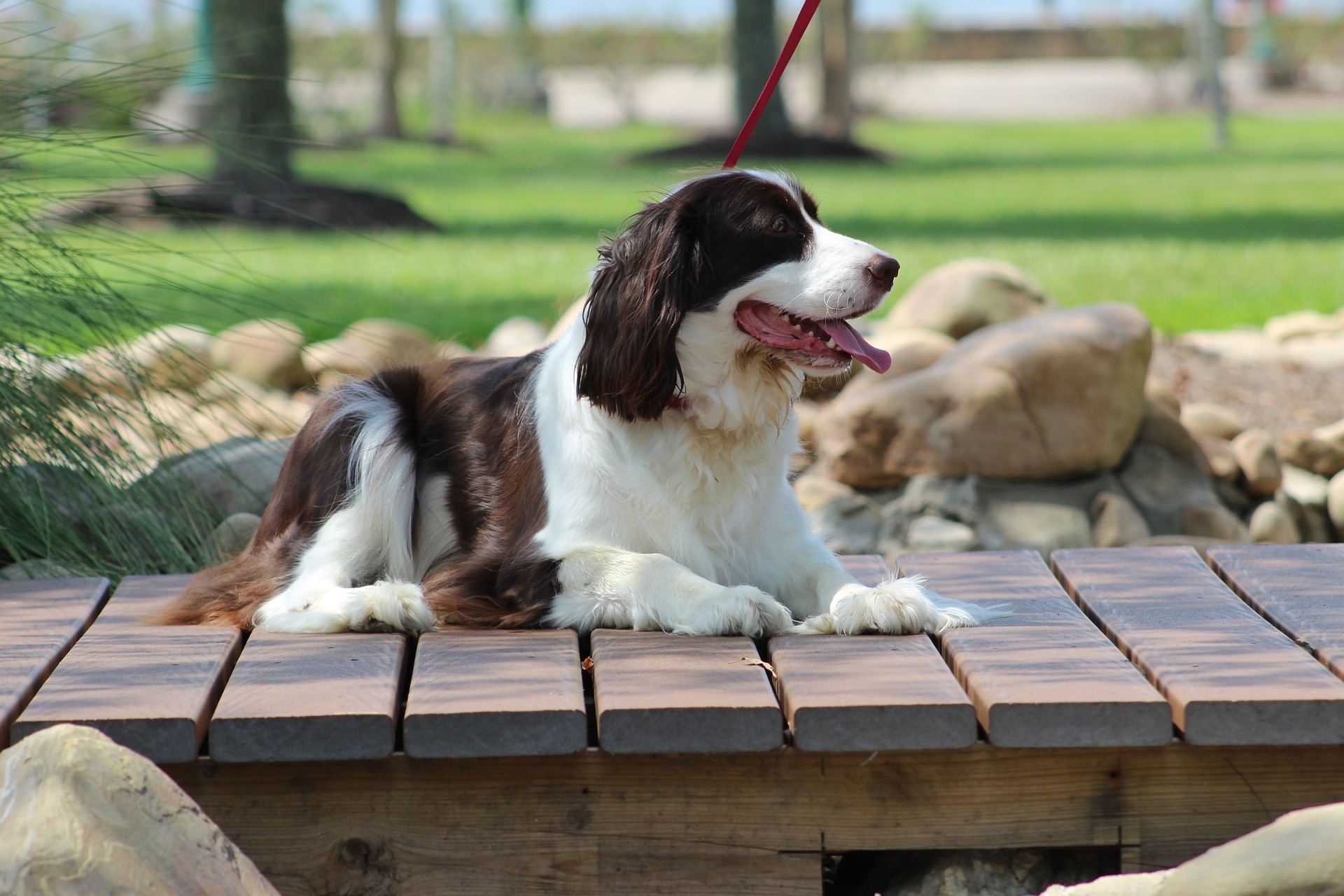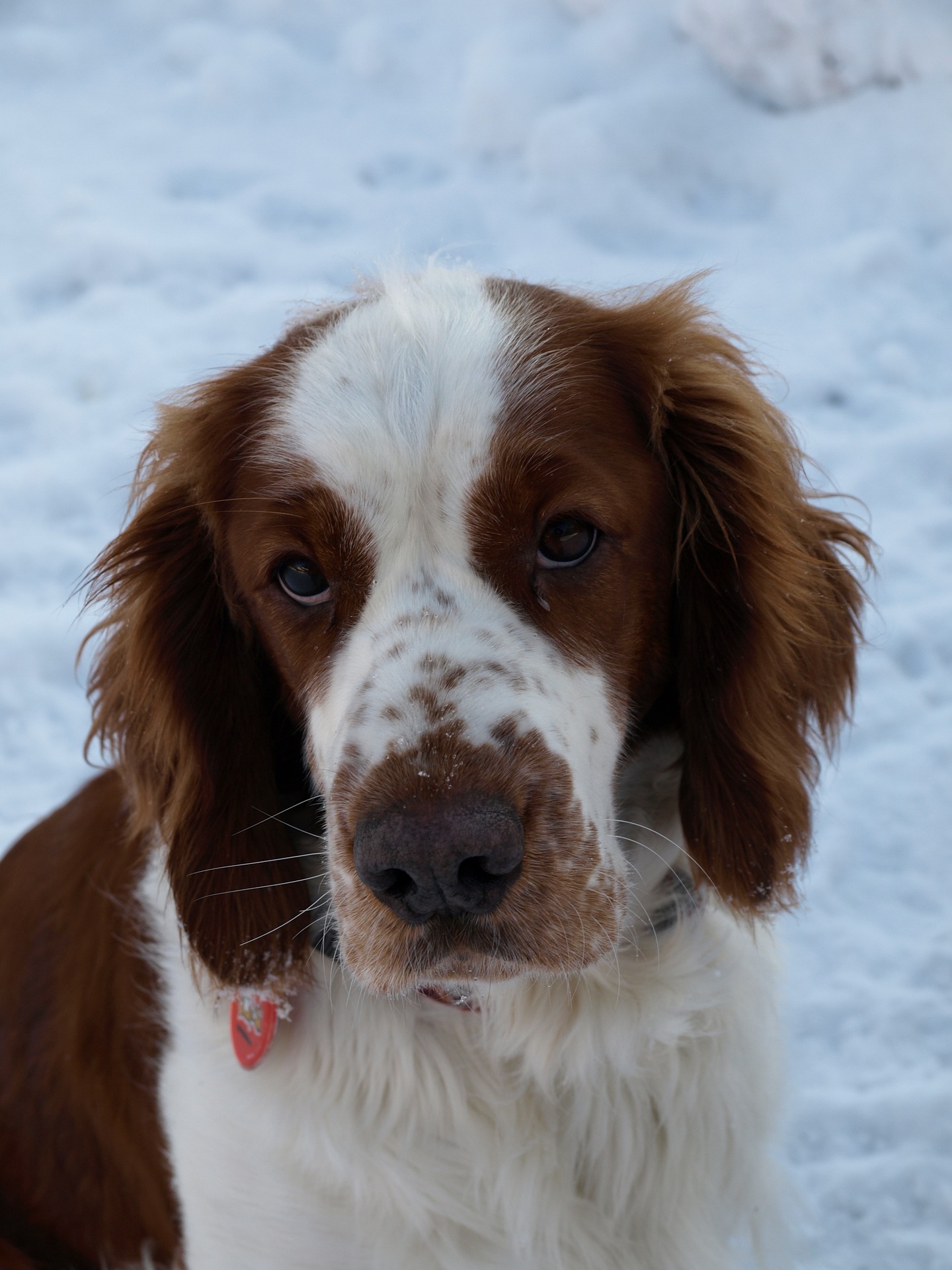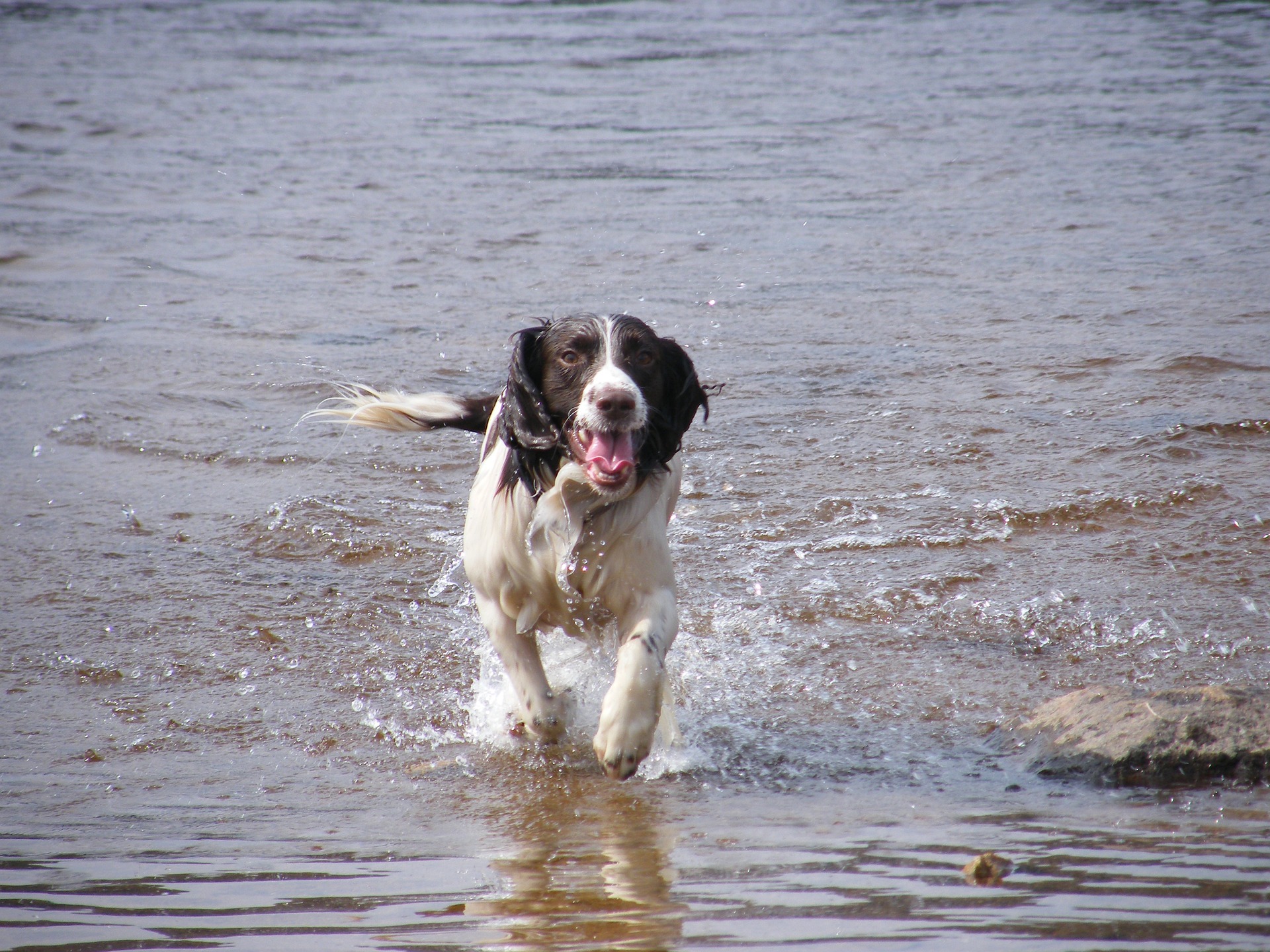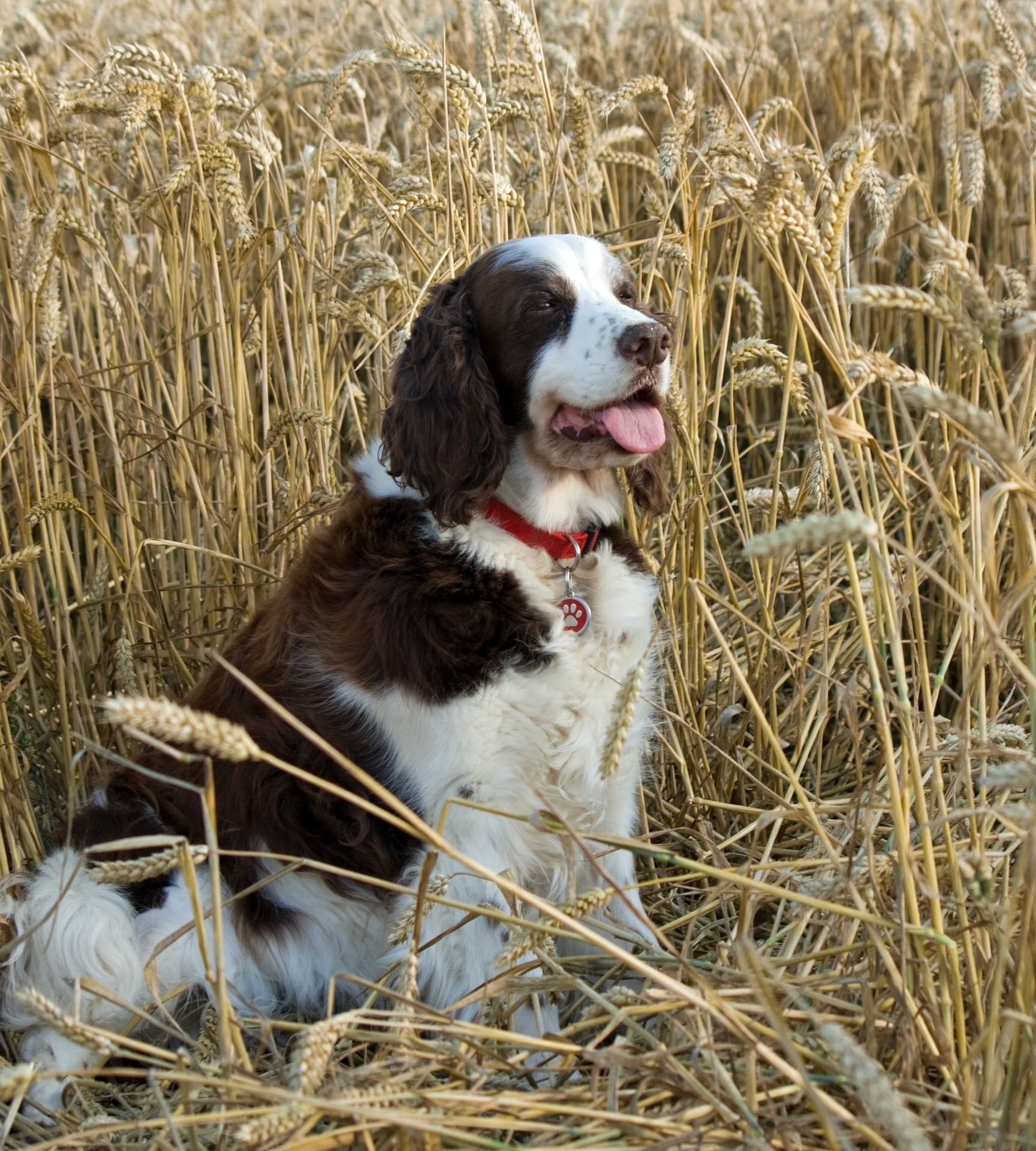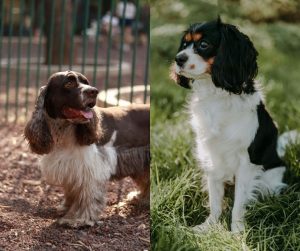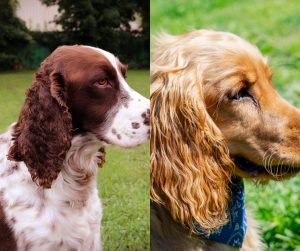Distinguishing between the Welsh Springer Spaniel and the English Springer Spaniel can be an interesting task for dog enthusiasts. Both breeds share the ‘Springer’ name, which is derived from their shared ability to ‘spring’ game out of its hiding spot during hunts.
However, despite their similar heritage as gun dogs, they exhibit distinct differences in physical characteristics, temperament, and care needs.
The Welsh Springer Spaniel typically has a slightly smaller stature and is known for its single red and white coat, which sets it apart from its English cousin.
The English Springer Spaniel is generally a bit taller and has a more varied coloration in its coat, which includes combinations like black or liver with white.
One can observe distinct behaviors as well; the English Springer tends to be more exuberant and energetic, while the Welsh Springer is often described as sensible and steady.
Understanding these differences is crucial for potential dog owners to determine which breed aligns better with their lifestyle, as each breed comes with its unique set of requirements for care and companionship.
Let’s take a look at the Welsch Springer Spaniel vs English Springer Spaniel dog breed comparison.
Key Takeaways
- The Welsh and English Springer Spaniels are distinct breeds with noticeable differences in size and coat color
- Their temperaments differ; Welsh Springer Spaniels are typically more reserved, while English Springer Spaniels are more energetic
- Choosing between the two breeds depends on matching their characteristics with an owner’s lifestyle and care capabilities
Origins and History
The tale of the Welsh Springer Spaniel vs English Springer Spaniel is woven through the fabric of canine history, tracing back to a heritage steeped in tradition and the lush landscapes of Britain. The Welsh Springer Spaniel, affectionally called “Welshies,” healds from Wales.
Records hinting at the existence of this breed date back all the way to the 13th century. Historically, they’ve been bred as hunting dogs, adept at flushing game from the underbrush with their keen sense of smell and spirited energy.
On the other hand, the English Springer Spaniel shares a common ancestry with their Welsh cousins. While the precise origins of the English Springer are somewhat foggy, what’s certain is that these dogs also hail from a lineage of proficient hunting canines known as the land spaniel. They were the dogs that would “spring” game, leading to their name “Springer.”
Both breeds belong to the larger family of spaniel breeds, each with distinctive traits perfected over generations. The Welsh Springer is celebrated for its loyalty and amiable nature, often marked with a splendid red and white coat, while its counterpart, the English Springer, is known for its friendly demeanor and a coat that comes in a variety of colors.
Until a string of successful showings in dog trials, the Welsh Springer Spaniel remained a relatively obscure breed. These victories catapulted them into the spotlight, distinguishing them within the spaniel breeds as canines not only of charm but also of championship quality.
Nowadays, many dog experts agree they share the same bond with the English Cocker Spaniel. The American Kennel Club recognizes both dog breeds. There are many more spaniels out there, like the Irish Setter, Cavalier King Charles Spaniel, American Cocker Spaniel, and more. All of these popular breeds excel in dog sports thanks to their hunting ancestry and nature.
Physical Characteristics
In comparing the Welsh and English Springer Spaniel breed, one will notice differences in size, coat, and distinct head features. These key physical attributes define each breed’s unique appearance and are essential to recognize for Springer Spaniel enthusiasts.
Size and Build
Welsh Springer Spaniels have a slightly smaller stature than their English counterparts. Males typically reach about 18 to 19 inches in height, while females are 17 to 18 inches tall.
They generally weigh around 35 to 45 pounds, presenting a balanced and sturdy build without being bulky.
On the other hand, English Springer Spaniels are taller and heftier. Males average 19 to 21 inches in height and both sexes can tip the scales anywhere from 40 to 50 pounds.
Their build is robust with a deep chest, illustrating a dog that has both power and agility.
Coat and Colors
Both breeds boast medium-length coats, but there are nuances. The Welsh’s coat is generally straight and silky, with feathering on the ears, chest, legs, and belly.
The distinctive coat colors of Welsh Springer Spaniels are rich red and white.
English Springer Spaniels also have medium-length fur with considerable feathering, yet their top coat can be very glossy.
The English variety prides itself in having a broader range of colors, including black or liver with white, and sometimes tricolored.
Head Features
The head shape and features of these two breeds differ subtly but noticeably.
Welsh Springer Spaniels have a fairly rounded skull with a slightly domed brow, giving them a kind and gentle expression. Their eyes and nose often match the coat’s rich color, enhancing their earnest look.
English Springer Spaniels’ heads are more elongated, with a flat skull and well-defined stop. They typically showcase eyes that convey alertness and trustworthiness. The ears are of good length and set level with the eyes, framing the face with graceful feathering.
Personality and Temperament
When considering a furry addition to the family, understanding the personality and temperament of the breed is crucial. Welsh and English Springer Spaniels both bring a joyful and affectionate nature to a home, but they have noteworthy distinctions in their behavior and interactions.
Temperament Within the Home
Welsh Springer Spaniels are known for their loyal and loving demeanor.
Within the home, these dogs thrive on companionship. They revel in family activities, making them an incredibly affectionate and happy part of the household.
With their intelligent minds, Welshies enjoy engaging in play and learning new tricks. However, they can also have a sensitive and somewhat stubborn streak, which means they respond best to positive reinforcement training methods.
English Springer Spaniels also exhibit high levels of loyalty and affection.
These energetic and playful companions enjoy being an active part of the family. They are a bit more exuberant than their Welsh counterparts, which shows in their boundless enthusiasm and eagerness to be involved in everything.
While they are intelligent and generally eager to please, their playful nature may require consistent and patient training to manage their bursts of energy.
Interaction with Strangers and Other Animals
Regarding interaction with strangers and other animals, Welsh Springer Spaniel puppy is often more reserved.
They might take a moment to warm up to new people but don’t mistake their caution for lack of friendliness. Once they feel comfortable, they’re just as happy and welcoming as any dog.
They typically coexist peaceably with other pets in the home, especially if they’ve been raised together.
In contrast, English Springer Spaniel puppy is known for its outgoing and sociable personality.
They tend to warmly greet strangers, showcasing their happy and energetic temperament. They’re the type who will shower visitors with enthusiasm, often winning hearts with their cheerful disposition.
With proper introductions and socialization, English Springer Spaniels can also get along well with other animals, making them excellent companions for multidog households.
Health and Care
Taking care of a Welsh or English Springer Spaniel breed involves being vigilant about their health and meeting their grooming and exercise needs. They share many common health conditions, but each breed has its own unique care requirements too.
Common Health Conditions
Both Welsh Spring Spaniel and English Springer Spaniels are prone to certain inherited health conditions. Owners should be on the lookout for:
- Hip dysplasia, a genetic condition where the thighbone doesn’t fit snugly into the hip joint
- Epilepsy, which can lead to seizures in some dogs
- Both breeds may also develop eye conditions like glaucoma and retinal dysplasia
Regular veterinary check-ups and being aware of your dog’s behavior can help catch these conditions early.
Grooming Needs
When it comes to grooming, both breeds need a fair amount of upkeep.
- They shed moderately year-round and more heavily during seasonal changes. Weekly brushing can help manage the shedding
- Check and clean their ears regularly to prevent infections
- Regular trimming around feet and hocks keeps them neat and reduces debris being tracked into the house
Grooming can be a bonding time for you and your Spaniel and is essential for their health and comfort.
Exercise and Diet
Springer Spaniels have high exercise needs due to their energetic nature.
- Daily exercise is a must; a mix of long walks, runs, or games like fetch will keep them happy and healthy
- Mental stimulation through dog training or puzzle toys can also keep their minds sharp
When it comes to diet and nutrition:
- Feeding a balanced diet suitable for their size, age, and activity level is important
- Both breeds may be prone to obesity, so it’s vital to monitor their food intake and treat consumption
Maintaining a healthy weight is crucial for avoiding additional stress on joints, especially for dogs with hip dysplasia.
Training and Socialization
When training Welsh and English Springer Spaniels, patience and consistency are key. These dogs are bright and eager to please, but they also have a playful side that requires a firm, loving hand to guide them.
Obedience and Skills Training
Obedience training for both Welsh and English Springer Spaniels should start early, focusing on basic commands such as “sit,” “stay,” “come,” and “heel.”
They are intelligent breeds that catch on quickly, but like many dogs, they respond best to positive reinforcement—think treats, praise, and playtime as rewards for a job well done.
Introduce mental stimulation into their routine to keep their bright minds engaged:
- Puzzle toys: Helps sharpen their problem-solving skills
- Trick training: Fosters mental agility and deepens your bond
Socialization with Humans and Animals
Socialization is crucial for both Springer Spaniel breeds, beginning ideally during puppyhood.
Expose them to various people, sights, sounds, and experiences:
- Positive interactions: Gently introduce them to a diverse range of humans and friendly animals
- Controlled settings: Start in quieter, less overwhelming environments before progressing to busier areas
Early socialization ensures these spaniels grow into well-adjusted, confident adult dogs who are comfortable around newcomers and other pets.
Remember, the foundation you build through dog training and socialization will pave the way for a lifetime of companionship and mutual understanding.
The Springer Spaniels in Action
Springer Spaniels, both Welsh and English, are highly regarded as skilled hunting dogs with a flair for game and companionship in the field.
Let’s take a closer look at what makes these breeds stand out when it comes to hunting abilities and competitive sports.
Hunting Abilities
Welsh Springer Spaniels are known for their keen sense of smell and ability to work well in all terrains, making them excellent hunting companions.
These dogs display impressive endurance and hunting style, methodically scouring the underbrush for pheasant and other game.
Hunters appreciate their smaller size which brings an intrinsic agility to navigate dense foliage with ease.
English Springer Spaniels, in contrast, are slightly larger with a fondness for working closely alongside hunters.
Renowned for their bountiful energy, they can sustain a day’s hunt with unmatched vigor. As gun dogs, they perform a dual role: flushing game, typically in the form of pheasant or waterfowl, and retrieving once the shot has been taken.
Sports and Competitions
In the world of canine sports, both breeds excel, drawing on their inherent hunting instincts.
Welsh Springer Spaniel dogs are often seen in competitions that test their natural abilities, such as field trials, where their persistence and nose work is brought to the fore.
This showcases their innate talent to work in harmony with their handler, useful traits originating from their hunting dog heritage.
English Springer Spaniel dogs shine in sports and competitions like agility and obedience, where their high energy levels and intelligence are put to the test.
They combine speed with grace, taking on obstacles with the same enthusiasm they display in the hunting field. With such versatility, they have carved out a reputation for being not just a hunter’s ally but also a competitor’s champion.
Choosing the Right Springer Spaniel
Selecting between a Welsh and English Springer Spaniel is a choice that should be made with an understanding of each breed’s unique traits and how they align with your lifestyle.
Differences Between the Breeds
The Welsh Springer Spaniel dog breed is generally smaller with males standing about 18 to 19 inches tall and weighing around 40 to 45 pounds.
Females typically measure 17 to 18 inches at the shoulder and weigh between 35 to 40 pounds. They are affectionate, loyal, and can be a bit more reserved. Their coat is usually red and white.
In contrast, the English Springer Spaniel dog breed is larger with males reaching 19 to 21 inches and females 18 to 20 inches in height. They have diverse coat colors and are highly energetic, often excelling in dog sports.
English Springers tend to be very social and are known for their friendly and enthusiastic behavior.
When one looks at these springers side by side, the visual differences are clear, but it’s their personalities and behavior that truly distinguish them.
Both dog breeds are keen on companionship, so consider how their characteristics align with your own needs, whether you’re looking for a more robust exercise partner or a gentle family friend.
Selecting a Breeder
When it comes to finding a breeder, opting for one who prioritizes the health, personality, and socialization of the springers is crucial.
Look for breeders who:
- Screen for genetic health issues: Ensure they test parent springers and provide health clearances
- Emphasize socialization: Puppies should be raised in a nurturing environment with exposure to different people, sounds, and experiences
- Are knowledgeable about the breed: Good breeders will be happy to talk about the breed’s characteristics and help you determine if it fits your lifestyle
Given the relative rarity of the Welsh Springer Spaniel, you might need to search a bit more thoroughly or be placed on a waiting list.
Meanwhile, English Springers are more popular, but popularity should not trump the importance of finding a reputable breeder.
Remember, choosing the right dog is a long-term commitment, and the breeder you select plays a pivotal role in this journey.
They should provide guidance and support not just during the adoption process but through your dog’s life stages.

